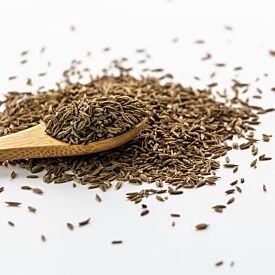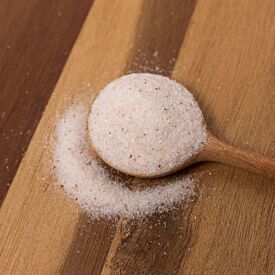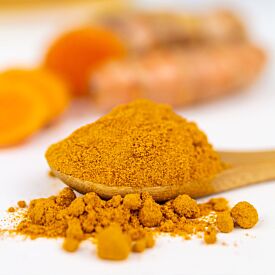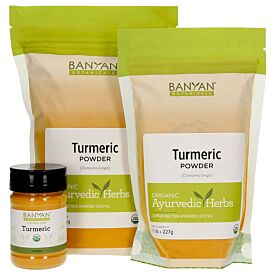3-Herbed Kitchari with a Dollop of Yogurt
As the days get shorter and we nestle into the cool autumn season, stews come to mind, rich, creamy stews that satisfy the robust agni that is stimulated by the fall. A hearty green mung bean, greens, and aromatic herb kitchari makes a delicious meal this time of year. This is a kitchari for the season, with a little twist and dollop of whey-rich yogurt.
Mung and rice are the essential kitchari ingredients. And ghee! For me, these three go hand in hand—everything else is imagination. From region to region, neighborhood to neighborhood, family within families, kitchari comes in many forms. Soft and creamy like congee, well-formed like pilaf, or this recipe—a soupy-stew. Made with prana-rich ingredients, this meal includes the six tastes of Ayurveda to nourish each of the five elements living within us.
This time of year is considered the vata season, and the hearty and earthy qualities of this stew provide a grounding stability that is still easy to digest. With the addition of greens and herbs, the detoxifying benefits are further enhanced, supporting a light cleansing action to help digest stagnation within the body. The soupy quality provides hydration, while the ghee moisturizes the body with good fat. All in all, this is a grounding, hydrating, and delicious dish that harmonizes with the seasonal qualities to bring internal balance. Happy eating and happy digesting!
3-Herbed Kitchari
Serves 4–6
Time: 45 minutes (approximately)
Balancing for vata, pitta, and kapha

Ingredients
- 3 tablespoons ghee or coconut oil
- 2 teaspoons cumin seeds
- 1 cinnamon stick
- 1 teaspoon turmeric powder
- ½ medium red onion, thinly sliced
- 1 tablespoon (heaping) freshly grated or finely chopped ginger
- 1 cup sprouted green mung beans or ¾ whole cup green mung beans soaked overnight
- ½ cup basmati rice, rinsed and soaked for 20 minutes
- 1 small bunch kale including stems, separate leaves and stems
- 1 cup herbs, equal parts cilantro and flat parsley, plus a little dill
- 1 ¼ teaspoon salt, or to taste
- Pinch of garam masala
- 6 cups water
Directions
In a 4-quart pot, warm the ghee or coconut oil over medium heat. When the oil has melted and is quite warm, add the cumin seeds and cinnamon stick. Cook until the cumin seeds are toasty and aromatic. Add in the thinly sliced onions and kale stems (not the leaves) and sauté until the onions begin to caramelize. Drain and add the rice, mung beans, grated ginger, and turmeric to the pot, stirring to blend the ingredients. The wet rice should prevent sticking and allow the ginger and turmeric to gently warm.
Add the 6 cups of water and chopped kale leaves. Increase the heat and bring to a boil. Reduce heat and cover, letting the kitchari simmer for about 15–20 minutes or until rice is almost done.
While the kitchari is cooking, chop the herbs. I like to use more cilantro and parsley with a touch of dill. When the rice is almost done, add the herbs and salt. Cover and cook for another 5–10 minutes. Turn off the heat and add a pinch of garam masala. Cover and let it rest for a few minutes to release the garam masala’s essential oils.
Toppings
- ½ cup whole milk yogurt (with whey), a little water, and salt (see directions below)
- Ghee
Finishing Touches
Hand mix the yogurt with a little water and salt to lighten it up and whip a little air into it. Serve as a side dish along with the ghee. As an alternative, prior to serving, mix both yogurt and ghee into the cooked kitchari.
Note: If you want a soupier kitchari, add additional water prior to adding in the chopped herbs so the flavors can meld. For vata constitutions, additional ghee is recommended.













